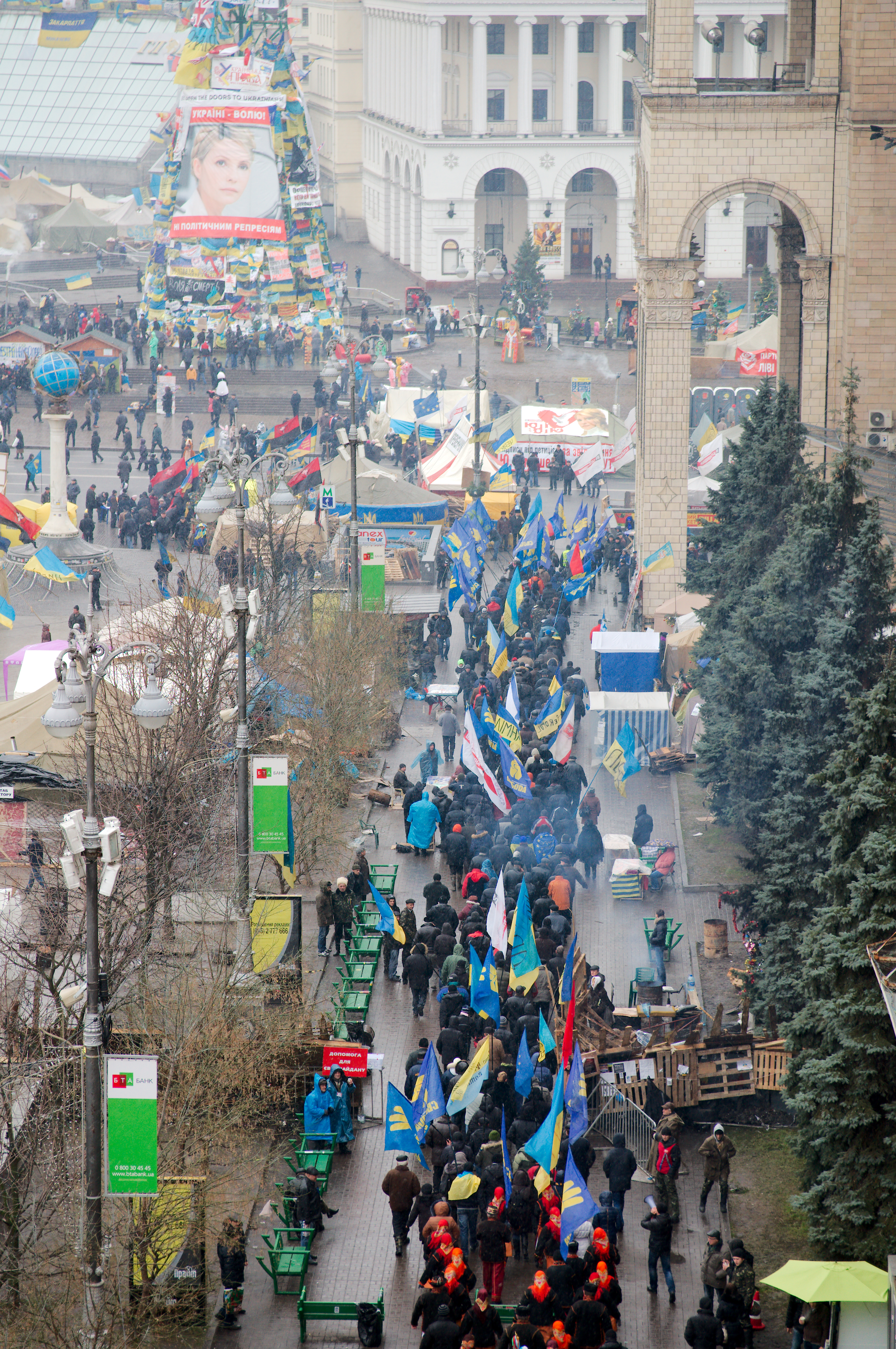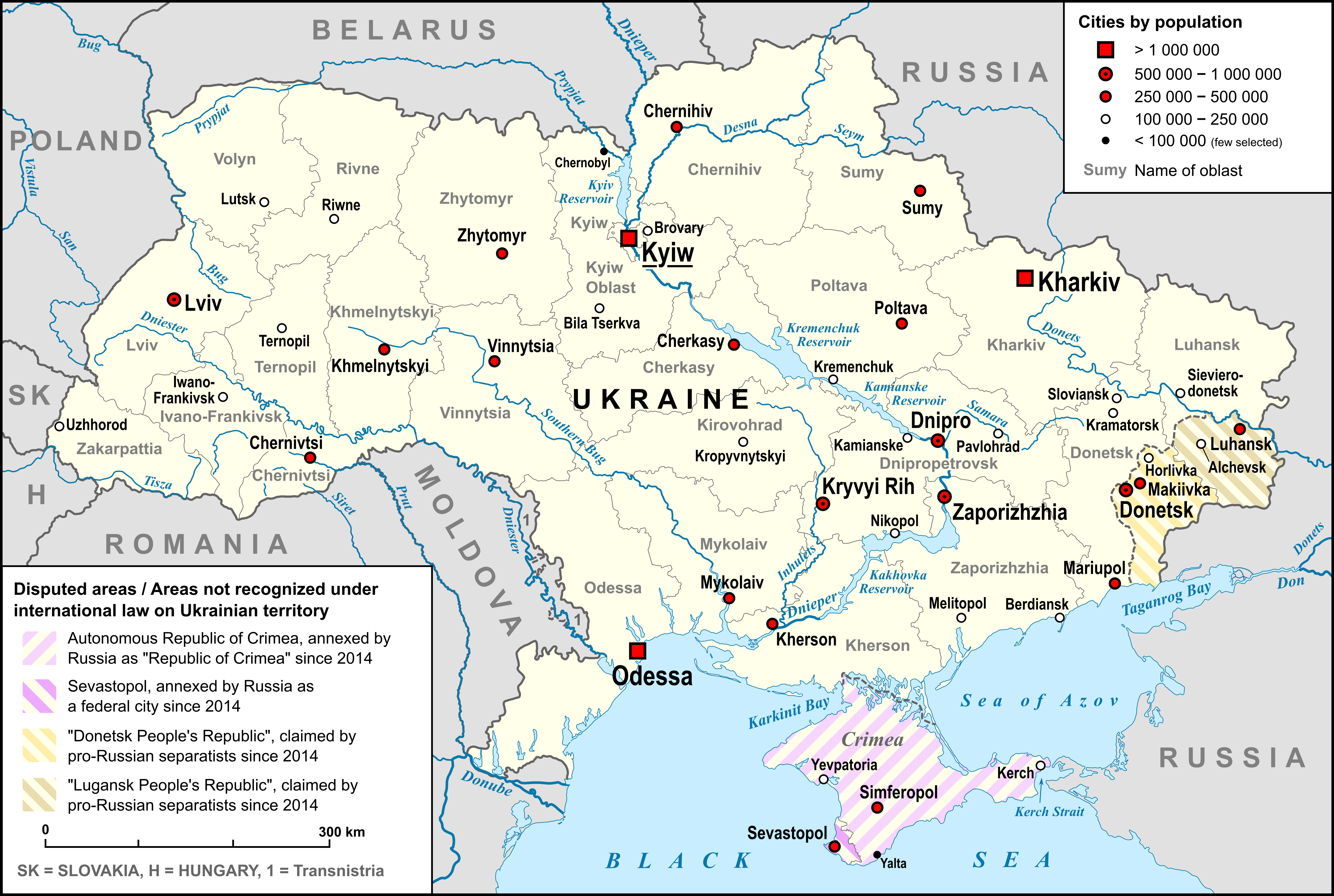|
Horlivka
Horlivka ( ; , ), also known as Gorlovka (, ), is a city in Donetsk Oblast of Ukraine. Its population is Economic activity is predominantly coal mining and the chemical industry. The Horlivka Institute for Foreign Languages has a two-building campus in the city centre. The city was severely damaged during the Battle of Horlivka in 2014 as part of the War in Donbas (2014–2022), war in Donbas. Since 2014, it has been mainly under Donetsk People's Republic, Russian occupation. History In April 1918, troops loyal to the Ukrainian People's Republic took control of Horlivka. Subsequently, under Soviet Union, Soviet control, by the 1930s it had expanded considerably and become a major center for mining operations in the Ukrainian SSR. During World War II, the city was occupied by German troops from 1941 to 1943. The Germans operated the Dulag 111 transit German prisoner-of-war camps in World War II, prisoner-of-war camp in the city. Retreating Germans burned buildings and perpe ... [...More Info...] [...Related Items...] OR: [Wikipedia] [Google] [Baidu] |
Battle Of Horlivka
The Battle of Horlivka began when the Armed Forces of Ukraine, Armed Forces of Ukraine (AFU) attempted to recapture the city of Horlivka, in Donetsk Oblast, from separatist insurgents affiliated with the Donetsk People's Republic (DPR) on 21 July 2014. Background Horlivka is a large city in Donetsk Oblast, north of Donetsk city. Amidst 2014 pro-Russian unrest in Ukraine, rising unrest across Eastern Ukraine, eastern and Southern Ukraine, southern Ukraine, armed men stormed and took control of a police station in Horlivka on 14 April. Soon after this, the men stormed the city administration, and gained effective control over the city for the breakaway Donetsk People's Republic. After DPR forces Siege of Sloviansk, withdrew from Sloviansk in northern Donetsk Oblast on 5 July, many travelled to Horlivka, which remained under DPR control. On April 12 at 20:00, the protesters attempted to seize the city's Department of Internal Affairs, they demanded the issue of weapons, but this a ... [...More Info...] [...Related Items...] OR: [Wikipedia] [Google] [Baidu] |
War In Donbas (2014–2022)
The war in Donbas, or the Donbas war, was a phase of the Russo-Ukrainian War in the eastern Donbas region of Ukraine. The war began in April 2014, when Russian paramilitaries seized several towns. Ukraine's military launched an operation against them, but failed to fully retake the territory. Covertly, Russia's military were directly involved, and the separatists were largely under Russian control. The war continued until subsumed by the Russian invasion of Ukraine in 2022. In March 2014, following Ukraine's Revolution of Dignity, Russia occupied Crimea. Anti-revolution and pro-Russian protests began in Ukraine's Donetsk and Luhansk provinces, collectively 'the Donbas'. On 12 April, a commando unit led by Russian citizen Igor 'Strelkov' Girkin seized Sloviansk and other settlements in the Donbas. Separatists declared the Donetsk and Luhansk republics (DPR and LPR) as independent states. Russia covertly supported them with troops and weaponry. It only admitted send ... [...More Info...] [...Related Items...] OR: [Wikipedia] [Google] [Baidu] |
Horlivka Urban Hromada
Horlivka urban hromada () is a hromada of Ukraine, located in Horlivka Raion, Donetsk Oblast. Its administrative center is the city Horlivka. The hromada contains 10 settlements: 1 city (Horlivka), 2 urban-type settlements (Holmivskyi and Panteleimonivka (urban-type settlement), Panteleimonivka), 2 villages (Mykhailivka, Horlivka urban hromada, Horlivka Raion, Donetsk Oblast, Mykhailivka and Riasne), and 5 rural-type settlements: See also * List of hromadas of Ukraine References {{Donetsk Oblast Hromadas of Horlivka Raion 2020 establishments in Ukraine States and territories established in 2020 Horlivka urban hromada, * ... [...More Info...] [...Related Items...] OR: [Wikipedia] [Google] [Baidu] |
Volodymyr Ivanovych Rybak
Volodymyr Ivanovych Rybak (; 30 November 1971 – 17 April 2014) was a Ukrainian politician, member of the Horlivka city council, kidnapped and then murdered by the pro-Russian militia on 17 April 2014. It was one of the first war crimes to have been committed by Russian forces during the Russo-Ukrainian War. Biography Rybak was born in the city of Horlivka in 1971. In 1995 he graduated from the Automobile Highway Institute of the Donetsk National Technical University and in 2002 from the Interregional Academy of Personnel Management. From 1995 to 2009, Rybak worked in the division of Criminal Investigation for the Horlivka city police. In 2009 he joined the All-Ukrainian Association Fatherland (''Batkivshchyna'') and the next year headed its city's party cell. In November 2010, Rybak became a member of the Horlivka city council. [...More Info...] [...Related Items...] OR: [Wikipedia] [Google] [Baidu] |
Horlivka Institute For Foreign Languages
The Horlivka Institute for Foreign Languages (part of Donbas State Pedagogical University) is an institute of higher education originally located in Horlivka, Ukraine. After the outbreak of the Russo-Ukrainian War, the institute was evacuated and is now operating in Bakhmut.How did the innovations work for entrants from ORDiLO and Crimea (30 September 2020) History In autumn 1949 the Pedagogical Institute for Foreign Languages was created on the basis of Bilotserkivsky teacher training college. In the academic year 1953-1954 Bilotserkivskiy Pedagogical Institute for Foreign Languages was organized. In Septemb ...[...More Info...] [...Related Items...] OR: [Wikipedia] [Google] [Baidu] |
Horlivka Raion
Horlivka Raion (; ) is a prospective raion (district) of Donetsk Oblast, Ukraine. It was formally created in July 2020 as part of the reform of administrative divisions of Ukraine. The center of the raion is in the town of Horlivka. Population: The area of the raion is occupied by Russia, which continues to use the old, pre-2020 administrative divisions of Ukraine. Prior to the 2022 Russian invasion of Ukraine, portions of the northern Maiorsk district of Horlivka were the only notable areas of the raion under Ukrainian government control. Subdivisions Raion consists of 9 hromadas: * Chystiakove urban hromada * Debaltseve urban hromada * Horlivka urban hromada * Khrestivka urban hromada * Shakhtarsk urban hromada * Snizhne urban hromada * Vuhlehirsk urban hromada * Yenakiieve urban hromada Yenakiieve urban hromada () is a prospective hromada of Ukraine, located in Horlivka Raion, Donetsk Oblast. Its administrative center is the city Yenakiieve. The area of the hromada ... [...More Info...] [...Related Items...] OR: [Wikipedia] [Google] [Baidu] |
Donetsk Oblast
Donetsk Oblast, also referred to as Donechchyna (, ), is an Oblasts of Ukraine, oblast in eastern Ukraine. It is Ukraine's most populous province, with around 4.1 million residents. Its capital city, administrative centre is Donetsk, though due to the ongoing Russo-Ukrainian War, the regional administration was moved to Kramatorsk. Historically, the region has been an important part of the Donbas region. From its creation in 1938 until November 1961, it bore the name ''Stalino Oblast'', in honour of Joseph Stalin. As part of the de-Stalinization process, it was renamed after the Donets river, the main artery of Eastern Ukraine. Its population is estimated at The oblast is known for its urban sprawl of Donetsk–Makiivka and Horlivka–Yenakiieve and it is often associated with the coal mining industry. In 2014, parts of the oblast, including Donetsk, came under the control of Russian-backed separatists who declared the Donetsk People's Republic, leading to a War in Donbas (2 ... [...More Info...] [...Related Items...] OR: [Wikipedia] [Google] [Baidu] |
2014 Pro-Russian Conflict In Ukraine
From the end of February 2014, in the aftermath of the Euromaidan and the Revolution of Dignity, which resulted in the ousting of Russian-leaning Ukrainian President Viktor Yanukovych, demonstrations by Russian-backed, pro-Russian, and anti-government groups (as well as pro-government demonstrations) took place in Crimea, Donetsk, Luhansk, Kharkiv and Odesa. The unrest, which was supported by the Russian military and intelligence services, belongs to the early stages of the Russo-Ukrainian War. During its first phase in February–March 2014, the Ukrainian territory of Crimea was invaded and subsequently annexed by Russia following an internationally unrecognized referendum, with the United Nations General Assembly voting in favor of Ukraine's territorial integrity. Concurrently, protests by anti-Maidan and pro-Russian groups took place across other parts of eastern and southern Ukraine. Local separatists, some directed and financed by the Russian security services, took ... [...More Info...] [...Related Items...] OR: [Wikipedia] [Google] [Baidu] |
Donetsk People's Republic
The Donetsk People's Republic (DPR; , ) is Russian-occupied territories of Ukraine, occupied territory in Ukraine that the Russian Federation has claimed to annex and declared as a Republics of Russia, republic of Russia, comprising parts of eastern Ukraine's Donetsk Oblast, with its capital in Donetsk. The DPR was created by Russian people's militias in Ukraine, Russian-backed paramilitaries in 2014, and it initially operated as a Separatism, breakaway state until it was Russian annexation of Donetsk, Kherson, Luhansk and Zaporizhzhia oblasts of Ukraine, illegally annexed by Russia in 2022. The entire territory of DPR is viewed as sovereign territory of Ukraine by nearly all UN member states. Following Ukraine's Revolution of Dignity in 2014, 2014 pro-Russian unrest in Ukraine, pro-Russian, counter-revolutionary unrest erupted in the eastern part of the country. Russia annexation of Crimea by the Russian Federation, annexed Crimea from Ukraine, while armed separatists seiz ... [...More Info...] [...Related Items...] OR: [Wikipedia] [Google] [Baidu] |
Raions Of Ukraine
A raion (; ), often translated as district, is the second-level Administrative divisions of Ukraine, administrative division in Ukraine. Raions were created in a 1922 administrative reform of the Soviet Union, to which Ukraine, as the Ukrainian Soviet Socialist Republic, belonged. On 17 July 2020, the Verkhovna Rada (Ukraine's parliament) approved an administrative reform to merge most of the 490 raions, along with the "City of regional significance (Ukraine), cities of regional significance", which were previously outside the raions, into just 136 reformed raions. Most tasks of the raions (education, healthcare, sport facilities, culture, and social welfare) were taken over by new hromadas, the subdivisions of raions.Where did 354 ... [...More Info...] [...Related Items...] OR: [Wikipedia] [Google] [Baidu] |
List Of Cities In Ukraine
There are 463 populated places in Ukraine, populated places in Ukraine that have been officially granted city status () by the Verkhovna Rada, the country's parliament, as of 23 April 2025. Settlements with more than 10,000 people are eligible for city status although the status is typically also granted to settlements of historical or regional importance. Smaller settlements are Populated places in Ukraine#Rural settlements, rural settlements () and villages (). Historically, there were systems of city rights, granted by the territorial lords, which defined the status of a place as a ''misto'' or ''selo''. In the past, cities were self-governing and had several privileges. The list of cities is roughly ordered by population and the 2022 estimates are compared to the 2001 Ukrainian census, except for Chernobyl for which the population is an unofficial estimate. The City with special status, cities with special status are shown in ''italic''. The average population size is 62,000. ... [...More Info...] [...Related Items...] OR: [Wikipedia] [Google] [Baidu] |
German Prisoner-of-war Camps In World War II
Nazi Germany operated around 1,000 prisoner-of-war camps () during World War II (1939-1945). The most common types of camps were Oflag, Oflags ("Officer camp") and Stalag, Stalags ("Base camp" – for enlisted personnel POW camps), although other less common types existed as well. Legal background German Reich, Germany signed the Third Geneva Convention of 1929, which established norms relating to the treatment of prisoners of war. * Article 10 required PoWs be lodged in adequately heated and lighted buildings where conditions were the same as for German troops. * Articles 27-32 detailed the conditions of labour. Enlisted ranks were required to perform whatever labour they were asked if able to do, so long as it was not dangerous and did not support the German war-effort. Senior non-commissioned officers (sergeants and above) were required to work only in a supervisory role. Commissioned officers were not required to work, although they could volunteer. The work performed was ... [...More Info...] [...Related Items...] OR: [Wikipedia] [Google] [Baidu] |




